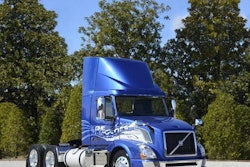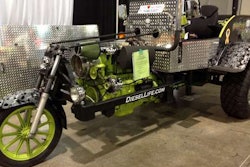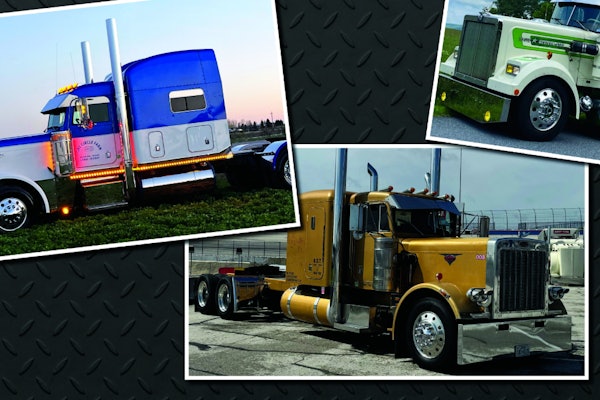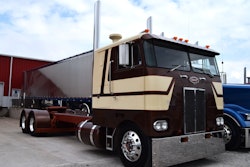[youtube ws8DK6g6vYI nolink]
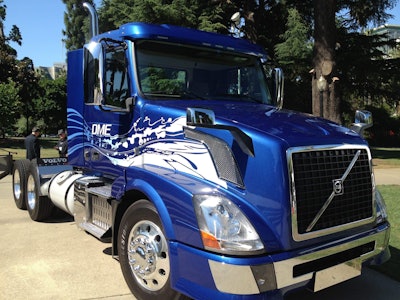
Volvo Trucks North America this week unveiled a “new” alternative fuel for heavy-duty commercial trucks. Dimethyl Ether (DME) is methane-based biofuel that is actually fairly common in day to day life: It is used as a propane-hybrid cooking fuel in Asia, as a propellant in bug sprays, deodorant and other products and even as a refrigerant.
Volvo has been eyeballing DME for several years now. It was first identified as a potential automotive fuel by Amoco back a couple of decades ago — but there was little or no impetus to develop the fuel at the time.
Today, interest in alternative fuels in North America is booming. So much so, in fact, that Volvo opted to introduce its new DME D13 engines in the States, because the company feels North America is the world leader in alternate fuel technology for trucks today.
I spent this morning driving a Volvo VN daycab powered by a D13 DME engine and I have to say I found the results to be impressive. As a fuel, nothing will ever beat diesel for powering commercial vehicles. But Ed Saxman, marketing manager, alternative fuels for Volvo, says that although DME has BTU and range shortcomings compared to diesel, Volvo feels the fuel’s performance in those two critical trucking metrics are superior to both LNG and CNG.

Like diesel, DME is a compression combustive fuel. Saxman says this gives it high horsepower capabilities: the vehicles I drove yesterday and today are 425 horsepower units, but Saxman is confident the official market launch in 2015 will include a 500 horsepower version as well. Additionally, Saxman says, Volvo believes they can easily outfit daycab versions of DME-powered VNs to have a 600 mile rule range.
Behind the wheel, I found a lot to like. Really the only glaring difference DME as a truck fuel has is that it takes a bit longer to start the truck. Once the
vehicle is running, the engine is noticeably quieter than diesel and seems to be at least as quiet, if not more quiet, than CNG and LNG trucks I’ve driven.
Thanks to the 425 horsepower rating and the iShift automated transmission, there was plenty of low-end power to get a flatbed loaded out to about 55,000 pound up and moving and keep it at speed out on the highway. Overall, out on the road, DME as a fuel is kind of unremarkable. That’s not a slap at this new fuel. Rather, the DME engine performs so well and so flawlessly that you quickly forget that you’re don’t have a diesel engine under the hood out there in front of you.
Another strong appeal to fleets that Saxman cites is that DME is an easier fuel to handle compared to CNG or LNG. It is not a cryogenic product and needs only 75 psi to operate, so high-pressure fueling and fuel systems are not required.
As far as the Big Picture goes, I like the potential of DME. You can create DME using natural gas “feeder stock,” but it’s not necessary. The fuel can be synthesized strictly from waste products such as waste food, manure or other organic matter. So its long, long term prospects as an automotive fuel are certainly worth consideration. Moreover, Volvo says its partnership with San Diego-based Oberon Fuels side-steps the current “chicken versus the egg” infrastructure debate taking place on the LNG issue today. Oberon can set up small batch DME production plants anywhere in the country with suitable biomass supply and begin producing enough fuel onsite to keep a fleet of up to 100 trucks on the road without any issues.
DME is just breaking into a alternative fuel market that is, itself, in its infancy. Many fleets will opt to run diesel for as long as they possibly can. But fleets investigating green solutions now have an interesting new option to consider in DME.




